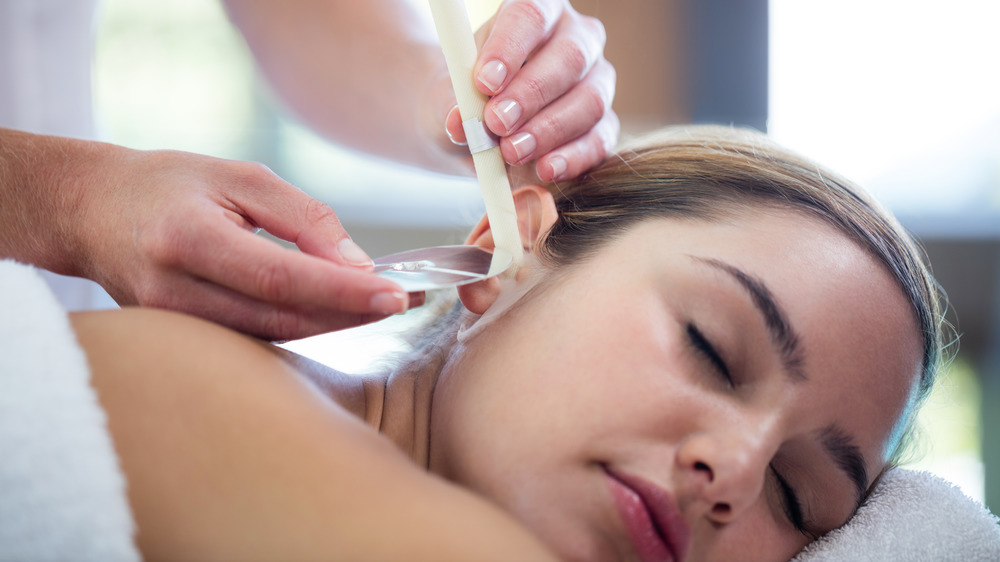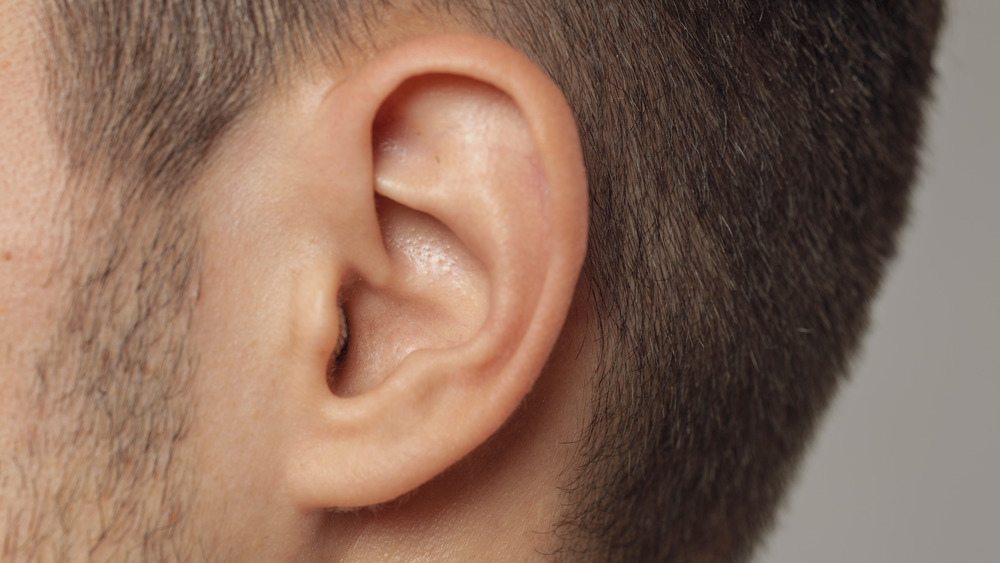The Real Danger Behind Ear Candles
Ear candling is a trend that's gained popularity in recent years that's marketed as a way to remove earwax. However, the technique has been found to not only be ineffective but also unsafe. The practice involves placing one end of an ear candle, a hollow cone made of fabric soaked in paraffin, beeswax, or soy wax, into your ear while the other end is lit (via Healthline). According to marketing claims, the warmth from the flame causes suction, which draws wax and other impurities out of the ear canal and into the cone. The technique has also been touted as a treatment for hearing loss, sinus infections, headaches, the common cold, flu, and sore throats (via the U.S. Food & Drug Administration).
Yet, none of these claims are backed by scientific evidence. Furthermore, researchers have performed studies that found ear candles don't even produce suction, says Dr. Cher (Xue) Zhao, a pediatric ear, nose, and throat specialist who sees patients at Massachusetts Eye and Ear. "Researchers have also analyzed the brown residue or debris at the end of the candle and it doesn't have any components of normal ear wax, but rather anticlimactically, it's just the burnt beeswax from the candle," she said in a post on the hospital's website.
The risks involved with ear candling
Not only are ear candles ineffective, they can be downright dangerous. According to the FDA, risks involved with ear candling include burns to the face, ear canal, or eardrum; a punctured eardrum; ears damaged or plugged from dripping candle wax; and injuries from starting a fire. The pseudo-treatment may also lead to delays in care for underlying health problems like ear or sinus infections, hearing loss, cancer, and temporomandibular joint disorders, which often cause pain in the ear, jaw, and face.
What's more, in most cases, removing earwax is unnecessary. While earwax has a bad rep, it is a completely normal and natural product the body makes that serves a number of health functions (via Harvard Health Publishing). These include moisturizing the skin inside the ear to prevent it from becoming too dry, absorbing dead skin cells, and preventing dirt, dust, and germs from entering the inner ear.
Some people produce more earwax than others and in certain instances, this buildup may need to be removed. This can be done with over-the-counter ear drops that soften the wax and allow it to be removed gently in the shower or by a healthcare provider at your doctor's office. Removing earwax with cotton swabs should be avoided, as this can actually push wax deeper into the ear and lead to damage to the ear canal or eardrum and even cause hearing loss.


